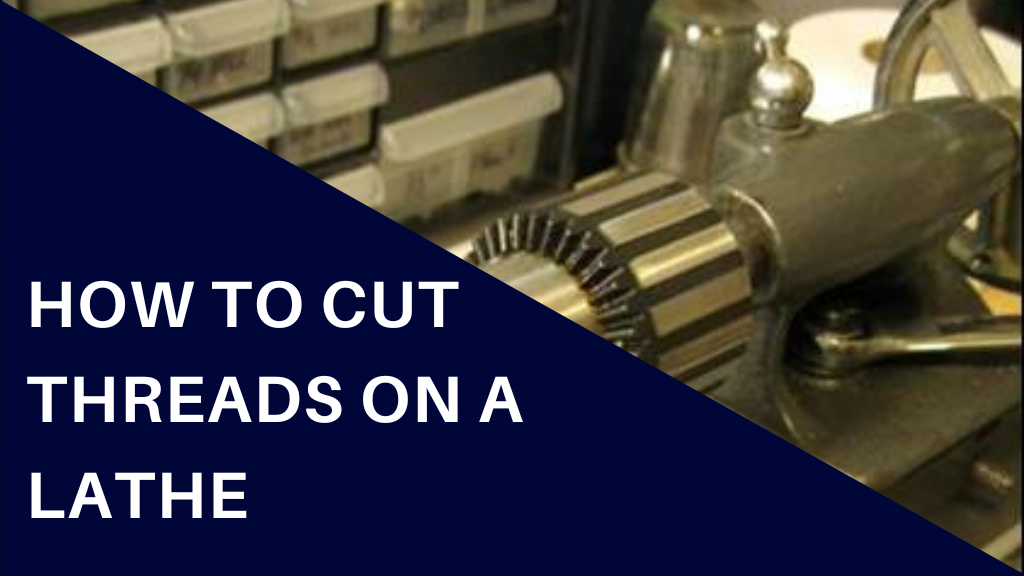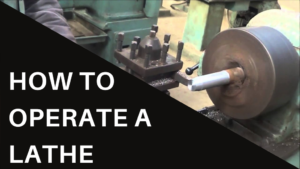Welcome to the exciting world of lathe operations, where precision meets craftsmanship. Whether you’re a seasoned machinist or a newcomer to the trade, mastering the art of thread cutting on a lathe is a valuable skill that opens up a myriad of possibilities in both repair and manufacturing projects. This guide will walk you through everything you need to know to cut threads efficiently and accurately on a lathe.
Understanding the Basics of Lathe Operation
Before diving into thread cutting, it’s crucial to grasp some fundamental aspects of lathe operation.
What is a Lathe?
A lathe is a machine tool used to shape metal, wood, or other materials by rotating the workpiece against a cutting tool. It’s an essential tool in any machinist’s arsenal, allowing for precise control over the material removal process.
Essential Lathe Components
Understanding the key components of a lathe, such as a chuck, tailstock, carriage, and cross-slide, is vital. Each part plays a specific role in holding, moving, and cutting the workpiece.
How to Cut Threads on a Lathe
Proper preparation is indeed the cornerstone of successful thread cutting on a lathe. The process involves a few critical steps that, when followed carefully, set the stage for precise and efficient thread cutting. Let’s dive into these preparatory steps in more detail:
Selecting the Right Tools
The very first step in preparing for thread cutting is selecting the appropriate tools for the job. This decision is largely influenced by the material of your workpiece and the type of thread you intend to cut. Here’s a breakdown of what you need to consider:
- Cutting Tool Material: For most metal workpieces, high-speed steel (HSS) cutting tools are commonly used due to their toughness and resistance to heat. For harder materials, carbide-tipped tools might be necessary for their superior hardness and wear resistance.
- Thread Pitch Gauge: This tool is essential for identifying and replicating the desired thread pitch accurately. Ensure you have a gauge that matches the thread system (metric or imperial) you plan to use.
- Tool Geometry: The shape of the cutting tool must correspond to the thread form you’re aiming to produce. The tool tip angle, for instance, should match the thread angle of your desired thread type (e.g., 60 degrees for most standard threads).
Setting Up Your Lathe
A correctly set up lathe is paramount for thread cutting. Even minor misalignments can lead to inaccuracies in your threads. Follow these steps to ensure your lathe is properly configured:
- Align the Tailstock: If your workpiece extends beyond the chuck and the tailstock supports it, ensure you align the tailstock perfectly with the spindle axis. Misalignment could lead to threads being cut at an angle, compromising their integrity.
- Set the Correct Spindle Speed: The spindle speed (measured in revolutions per minute or RPM) needs to be appropriate for the material you’re working with and the type of thread you’re cutting. Consult your lathe’s manual or a machining reference guide to select the right speed.
Measuring and Marking
Before you start cutting, measuring and marking your workpiece is crucial to ensure that the threads start and end where you want them to:
- Measuring: Use a calliper or micrometre to precisely measure the diameter of your workpiece where you intend to cut the threads. This measurement is critical for setting up your lathe correctly and choosing the right tool settings.
- Marking: With a fine-point marker or a scribing tool, mark the starting point for your thread on the workpiece. This visual guide will assist you in accurately aligning the cutting tool at the start of the threading process and can also mark any critical dimensions related to the threading operation, such as thread length or spacing for multiple starts.
The Thread-Cutting Process
After diligently preparing your workpiece and lathe, you’re now set to embark on the actual thread-cutting journey. This phase is where your preparation pays off, translating into precise and clean threads. Let’s break down this process into clear, manageable steps:
Setting the Lathe for Thread Cutting
To initiate, you must configure your lathe to match the specific thread requirements:
- Adjust the Gearbox: Adjust your lathe’s gearbox settings to control the carriage’s feed rate, directly influencing the pitch of the thread you’re cutting. Consult your lathe’s manual or the chart typically found on the machine itself for the specific thread pitch settings you aim to achieve.
- Position the Cutting Tool: Carefully align the cutting tool so that its tip is square to the workpiece. The tool should be set at the correct height, typically with the tip at the centerline of the workpiece, to ensure an even cut. For external threading, the tool should face towards the workpiece, ready to carve out the thread as it moves.
The Actual Thread Cutting Steps
With your lathe set, you’re ready to cut:
- Engage the Workpiece: Gently touch the tool to the marked starting point on the workpiece. Use the lathe’s cross slide to bring the tool into light contact with the workpiece, marking a slight indentation as your starting cue.
- Start the Cut: With the lathe running, wait for the threading dial to reach the correct position (usually indicated by numbers or marks on the dial), then engage the half-nut lever to start the carriage’s movement.
- Depth Adjustment: After each pass, disengage the half-nut lever and reverse the lathe to bring the tool back to the starting position. Before the next pass, slightly increase the depth of the cut by adjusting the compound rest, typically set at a 29 to 30-degree angle for most thread forms. This gradual approach helps manage the cutting force and reduces the risk of tool breakage.
- Repeat: Continue this process—engaging the cut, disengaging, and returning to start—gradually deepening the cut until you reach the desired thread depth.
Monitoring and Adjusting
Precision is crucial in thread cutting, necessitating constant vigilance:
- Visual Inspection: Regularly stop the lathe and inspect the thread with your eyes and fingers. This tactile feedback can help identify any irregularities or issues early in the process.
- Use a Thread Gauge: A thread gauge is an indispensable tool for verifying the accuracy of your threads. Periodically check your work against the gauge to ensure the pitch matches your target. Adjust the depth of cut as necessary based on these measurements.
- Adjust for Tolerance: Remember, materials can compress or expand slightly under machining stress. Account for this by aiming for a slightly tighter fit initially, then test fitting and making final adjustments as needed.
Types of Threads and Their Applications
Threads are an integral component of countless mechanical assemblies, offering versatility in function and design to suit a broad range of applications. Understanding the differences between thread types, as well as their specific uses, is essential for anyone involved in machining, engineering, or manufacturing. Let’s explore some of the key distinctions and applications of various thread types:
Metric vs. Imperial Threads
The primary difference between metric and imperial threads is the system of measurement each employs:
- Metric Threads: Countries worldwide commonly use metric threads, measured in millimetres, due to the widespread adoption of the metric system. The pitch, which is the distance between thread peaks and is also measured in millimetres, defines metric threads. They denote these threads with an “M” followed by the nominal diameter and the pitch (e.g., M8 x 1.25).
- Imperial Threads: Also known as Unified Thread Standard (UTS), imperial threads are measured in inches. They are predominantly used in the United States and a few other countries. Unlike metric threads, imperial threads are categorized by the number of threads per inch (TPI). A common notation for imperial threads includes the diameter in inches followed by the TPI (e.g., 1/4″-20).
Right-Hand vs. Left-Hand Threads
The direction in which threads are wound around a cylinder distinguishes right-hand from left-hand threads:
- Right-Hand Threads: These are the most common type of threads, which tighten or advance when rotated clockwise. The majority of screws, bolts, and nuts feature right-hand threads, conforming to the natural motion of tightening for most individuals.
- Left-Hand Threads: Less common, these threads tighten or advance when rotated counterclockwise. They are specifically used in situations where rotational forces or other factors might cause a right-hand threaded joint to loosen over time.
Conclusion
Cutting threads on a lathe is a skill that requires patience, practice, and precision. By understanding the basics, preparing properly, and following the steps outlined in this guide, you’ll be well on your way to mastering this essential machining technique.
FAQs
- What’s the difference between internal and external threads?
- You cut internal threads into holes and external threads onto shafts or the outside of cylinders.
- Can I cut both left-hand and right-hand threads on the same lathe?
- Yes, you can set up most lathes to cut both types of threads with the correct setup and tools.
- How do I prevent my threads from being too tight or too loose?
- Precision measuring and frequent use of a thread gauge during the cutting process will help ensure your threads fit perfectly.
Related Post:





